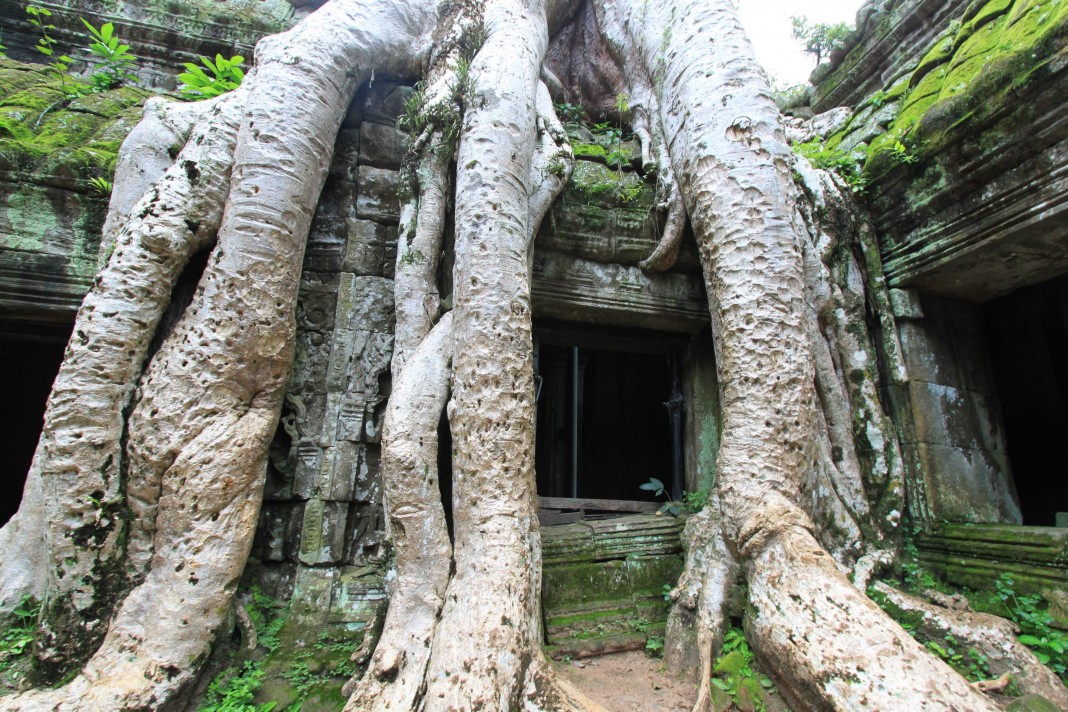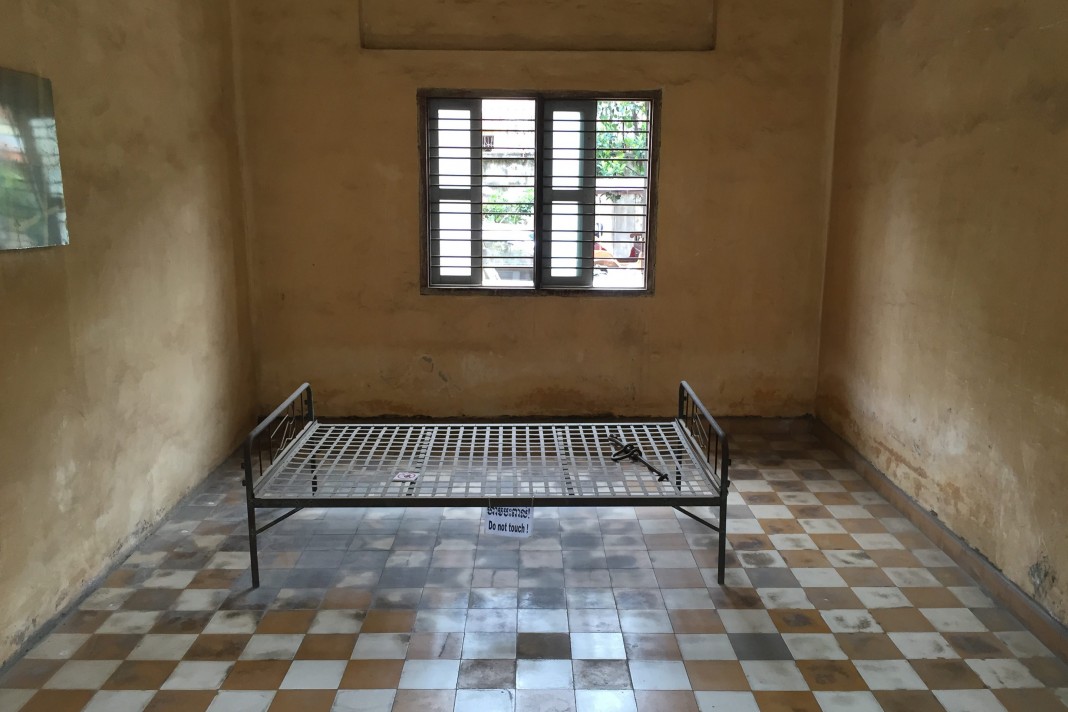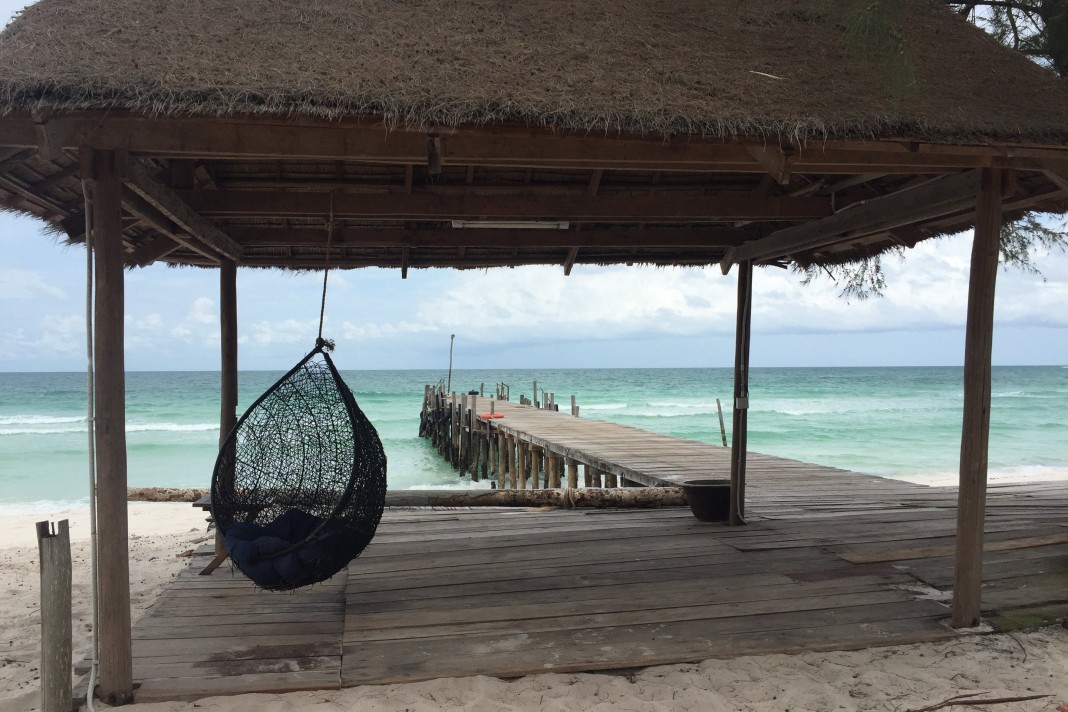

For decades off limits to all but the most intrepid travellers, today Southeast Asia's Cambodia is a popular destination for all kinds of folks: from independent backpackers who roam far into the hinterland to luxury tourists who stay in style and experience Angkor Wat between massages and exquisite French meals.
Tourism to Cambodia has exploded over the last two decades in two waves. The first was when security concerns were addressed, allowing easier access to Angkor and then, more recently, the second was when Cambodia's stunning islands opened for business. Despite an influx of visitors, mass tourism remains largely restricted to just a few destinations and it remains relatively easy to drop off the tourist highways. Don't assume Angkor Wat is all Cambodia has to offer; there is so very much more.
Our Cambodia travel guide is here to help you get the most out of each and every one of your trips to Cambodia, beginning with some guidelines below aimed at first-time travellers to the country. Enjoy.
Given Cambodia has an Angkor Wat motif on the flag, it's difficult not to think Cambodia equals Angkor. While it's true that Angkor Wat and the surrounding historical park are one of Cambodia's highlights, they are not the only one. The country also has some outstanding tropical islands, a nascent ecotourism scene, and some fascinating and historical urban centres. While the country lends itself to a quick trip to see the ruins, it deserves more.

Angkor Wat: Cambodia’s Angkor Wat is, quite simply, one of the most splendid attractions in all of Southeast Asia. Long considered “lost”, the ruins of Angkor were never really lost to the Khmers, who have used the monuments as religious sites throughout their history.
Siem Reap: Just five kilometres south of Angkor Wat, Siem Reap has exploded from a relatively small backwater town into the fastest growing settlement in the nation. Think amazing food, seductive places to stay and a mass of non-ruin things to do.
Phnom Penh: A crossroads of cultures, times, peoples and worlds, in Phnom Penh you can find temples, markets and buzzing back streets. The thriving, turbulent city brings together Cambodian, Chinese and French influences in a congested, grimy, shiny, vibrant and thrilling mash that somehow seems to work—except when it rains.
Islands: When many people think "Cambodia islands" they draw a blank. But the kingdom is home to some outstanding islands, suited to chilling, sunning and funning (ok, we made that word up)—here are some of our favourites.
Battambang: With a rich architectural heritage, an increasingly confident art scene providing a cradle for many of Cambodia’s top talents, and stunning surrounding countryside, Battambang is a tranquil respite from the boom and hustle of Phnom Penh and Siem Reap.

Kratie: A charming, cheerful little town on the Mekong, Kratie is best known for its dolphins, in particular the Mekong Irrawaddy dolphins. The dwindling population of these endangered creatures makes their home off the village of Kampi, 20 kilometres north of town.
Banlung: One of Cambodia’s loveliest provinces is also one of the furthest away from anywhere else. But Ratanakiri and its capital, Banlung, is truly worth the effort, and is now easier to get to than ever before.
Koh Kong: Overlooking the peninsula that links Cambodia to Thailand, which is accessed by a near two-kilometre long bridge, Koh Kong is a breezy town, and makes for a pleasant and relaxing base from which to explore the surrounding hills, seas and all that lies in between.
Kampot: Long described as “sleepy”, the Kampot of today is transforming into a lively tourist destination, with plenty of good restaurants, bars and music to be found. But that doesn’t mean they’ve given up on the hardcore riverside lounging that the city has built its name on. Not by a long shot.

Kompong Thom: For those longing to escape the crowds and madness of Cambodia’s main tourist attractions, yet keen to visit some spectacular locations, Kompong Thom might be just the ticket.
Kompong Chhnang: Central Kompong Chhnang province is home to Cambodia's most sublime and easily accessible scenery, while the provincial capital of the same name is one of Cambodia’s most picturesque, photogenic and fascinating regional towns.
Sen Monorom: Little-visited Sen Monorom is the capital of Mondulkiri, famed for its (rapidly disappearing) thick forests, thunderous waterfalls, hills that wave up and down towards misty, faraway horizons and a real chance to immerse yourself in nature.
Chi Phat: An idyllic Cambodian village between a mountain and a river offers a relaxed, welcoming base from which to explore a special part of the world. Tucked into the southeastern front of the Cardamom Mountain range, Chi Phat is a pretty, prosperous two-street village.
In recent years the islands off the coast of Cambodia (we cover seven Cambodian islands on Travelfish) have become a tourist destination in their own right, with new accommodation being built on nearly all of them, along with a host of bars, restaurants, dive shops and so on. While they're no longer deserted island paradises, they do still possess a serenity not easily found elsewhere in mainland Southeast Asia.

Koh Rong: From the image of pristine, picture-postcard-perfect cliche to somewhat messy, party destination extraordinaire to… whatever comes next, Koh Rong offers 43 kilometres of gorgeous, pristine beachfront along seven bays, all teeming with corals, marine life and fluorescent plankton, as well as dense forests covering its interior.
Koh Rong Samloem: Just 45 minutes by speedboat, yet a world away from the grubby confines of Sihanoukville, Koh Rong Samloem offers four completely different atmospheres on four beaches on what many might describe as the archetypal paradise island.
Koh Ta Kiev: Not so many people stay overnight on Koh Ta Kiev, which is a shame because it's beautiful and has a few easily accessible beaches.
Koh Totang: Unspoiled and undeveloped—there are no roads, barely even any tracks—makes getting back to nature easy on Ko Totang.
National parks: Cambodia lacks the wide selection of national parks that can be found in some of its neighbours, but for the dedicated nature lover, Virachey National Park in the northeast remains a highlight. Coastal nature lovers may find Ream National Park of interest and, in the same area, Bokor National Park, while largely de-charmed by developers, is still worth a peek. Close to Phnom Penh lies Kirirom, Cambodia's first national park.

When it comes to Cambodia and Khmer ruins it is a bit of a challenge to know just where to start—ruins great and small can be found scattered all over the country. For ease of comprehension, we've broken some of the main sites out into a few clear clusters.

From Siem Reap: Siem Reap is the hub for visiting Angkor Historical Park, along with outlying sites including Banteay Srei, Phnom Kulen, Beng Mealea, the Roluos Group and Koh Ker.
From Banteay Chhmar: While possible to visit from Siem Reap, we highly recommend overnighting at Banteay Chhmar as a part of a community-based tourism scheme.
From Kompong Thom: Preah Khan of Kompong Svay occupies a near-mythical position in Cambodia-traveller lore and is best visited from Kompong Thom—as is the lovely pre-Angkorian Sambor Prei Kuk.
From Battambang: An important province in the Angkor period, Battambang is home to several temple ruins and historical sites which can be found within a 30 kilometre radius of town, providing convenient day trip opportunities.
Preah Vihear Temple: The object of a longstanding territorial dispute between Cambodia and Thailand, Prasat Preah Vihear is one of the kingdom’s most stunning creations, not just because of the temple itself but thanks to the spectacular views across northwest Cambodia afforded from atop the 650 metre-high cliffs at the temple’s apex. A must see.
So you've got your ruin-wandering and beach baking done, what else is there to do in Cambodia? Quite a bit actually!

Learn to dive: While Cambodia's diving does not rival Thailand's you can learn to dive on some of the islands out from Sihanoukville, including Koh Rong and Ko Sdach.
Cooking courses and food walks: Food walks and cooking courses are popping up across the country like mushrooms in the wet season. Battambang, Siem Reap and Phnom Penh all have options for the culinarily inclined.
Trekking: In northeast Cambodia, trekking in Virachey National Park will appeal to those looking to get right off the map. Don't expect minority villages and the like—this is all about the wilderness—or at least what remains of it. Also look into Chi Phat and Kirirom.
The most popular time to go to Cambodia is between November and February, with the peak season falling between late December and mid January. At this time of year the weather in Cambodia is excellent—there is little rain and it isn't uncomfortably hot. This is a popular time of the year though, and destinations such as Angkor Wat and the Cambodian islands can be very busy—in peak season having a reservation for Koh Rong and Koh Rong Samloem can be a prudent idea.

While the Christmas period is the most popular team to go to Cambodia, opting for shoulder season instead, either between late October and early December or from early February through to the end of March, can be a good idea. In doing this you'll only have a moderate risk of rain (if visiting in October/November) or of uncomfortable heat (March, April) but the pay off will be in slightly reduced numbers of tourists.
Cambodia's wet season runs from May to October and isn't the best time for a Cambodian beach holiday—seas can be rough, in heavy weather boat services may be curtailed and some island accommodation may be closed. On the mainland, the wet keeps the crowds at bay somewhat and Angkor is wonderful in the wet season, so it isn't all bad. Phnom Penh often experiences heavy flooding during Cambodia's monsoon season.
April is scorchingly hot but is also the time of Khmer New Year which sees a raucous celebration not unlike Songkran in Thailand. Phnom Penh is absolutely heaving at this time of year (be especially vigilant about pickpockets) and transport can be overcrowded as Khmers up and travel all over the country.
How long have you got?! For a first time visitor looking to see just see Angkor Wat on a fly-in, fly-out trip, three days would suffice as an introduction. As soon as you get into multiple destinations, you'll be needing at least a week. With two weeks you could see Angkor, a couple of towns and perhaps an island. Overall, we'd say the country really deserves two weeks as a primer.

If you’re planning on travelling around more, three to four four weeks is a popular stretch especially as Cambodia has good land border connections with all three of its neighbours, allowing it to fit in well for a regional trip.
If you are planning a longer stay, it pays to familiarise yourself with Cambodia’s visa rules. They change occasionally and some rules are enforced haphazardly, complicating what should be a simple process.
Your budget will depend very much on your style of travelling. If you’re comfortable in very simple accommodation, eating street food, not drinking too much alcohol, travelling using cheap transport and steering clear of heavily touristed (and so more expensive) destinations, you can survive on around US$15 per day—more on the islands and maybe a couple of dollars less if you’re especially frugal and travelling as a couple.

Most independent budget travellers though tend to spend more. That air-con room is tempting, as is the pool and WiFi, latte and occasional VIP bus or short domestic flight. All these conspire to push daily budgets up to around a more comfortable US$20-$30 per day.
If your tastes veer more towards the luxurious, then Cambodia does offer terrific value — especially in the accommodation stakes, with lovely and tasteful offerings in the US$50-$150 per night mark scattered across the country. Food and entertainment costs can rise accordingly. Likewise, you can also spend north of a thousand dollars per day for truly luxurious settings—think private pool villas, butlers and so on—flying everywhere and fine dining the whole way along.
Cambodia is one of the poorest nations on earth, yet it remains a fairly safe place. Petty theft is a problem, particularly the snatch and grab variety, but violent crime is rare. Always keep your wits about you. Drinking 15 beers and walking home at 3am probably isn't safe in your home country either.
Violent crime specifically aimed at foreign travellers remains rare, but does happen. Use your common sense, stay under control and, if a situation becomes uncomfortable, leave or seek assistance immediately. In the case of theft, we strongly advise not to resist and to hand over whatever the thief is demanding—it is not unusual for thieves to be beaten to death when caught—so they have far more to lose then you
Having adequate travel insurance cover is essential.
Each year at least a few foreigners are found dead in Phnom Penh guesthouses of accidental drug overdoses. The main reason? Buying cocaine that is actually heroin. Aside from being illegal, the risks involved in taking drugs in Cambodia may be higher than those in your home country. The penalties, if caught, are harsh. Don’t ride (or drive) stoned or drunk. Just because the tuk tuk driver who sold you a bag of pot didn’t get arrested doesn’t mean you won’t be.
The general state of driving skill on Cambodia's roads is poor. Cars and buses often travel at high speed, seat belts are often not fitted and drug use among drivers is reportedly not unusual. Vehicles are frequently overloaded. Roads often include everything from high speed taxis to buffalo carts, and the speed differential increases the dangers considerably. Avoid being on the roads at night when possible. We do not recommend using buses at night.
Always, always always wear a helmet when on a motorbike in Cambodia.
If you wouldn’t do it in your home country because it is stupid, why do it in Cambodia?
Angkor
Banlung
Banteay Chhmar
Battambang
Kampot
Kep
Koh Ker
Koh Rong
Koh Rong Samloem
Koh Ta Kiev
Koh Totang
Kompong Cham
Kompong Chhnang
Kratie
Pailin
Phnom Penh
Preah Vihear Temple
Sen Monorom
Siem Reap
Sihanoukville
Stung Treng
Takeo
See all destinations in Cambodia